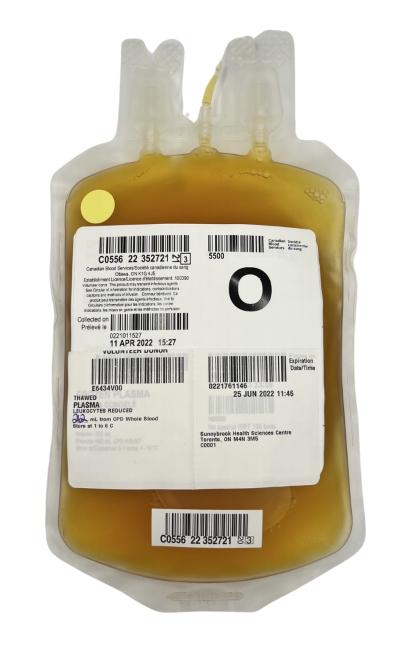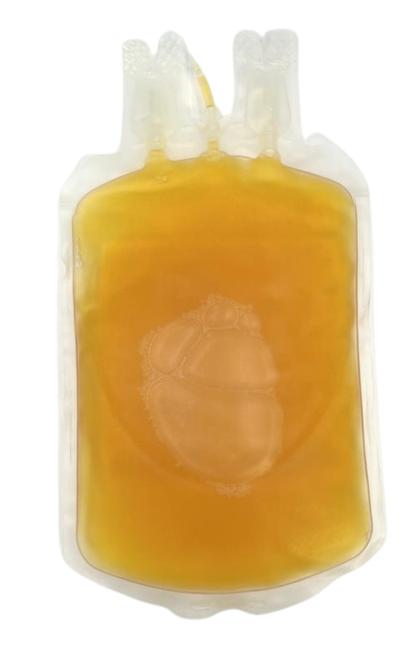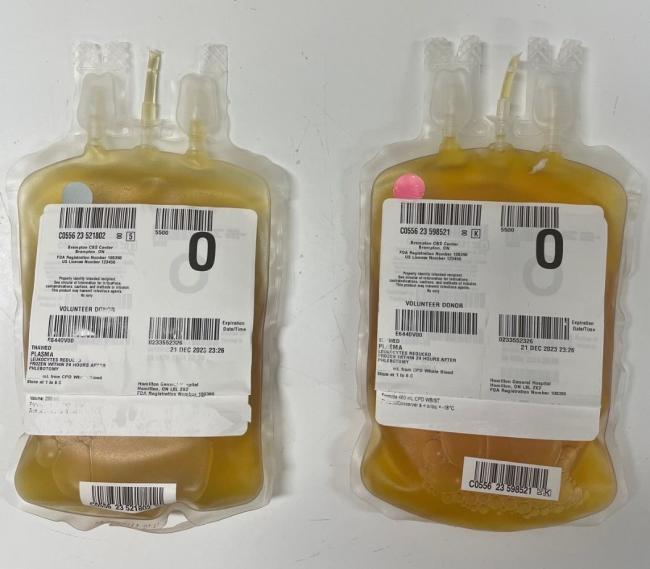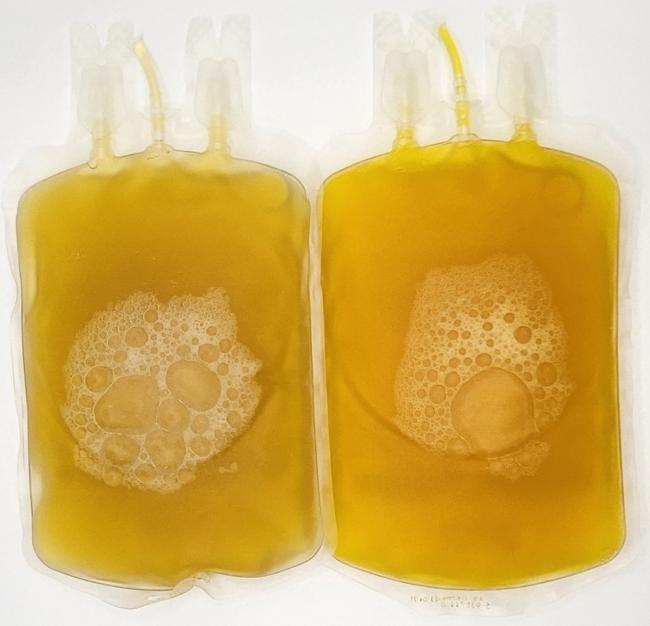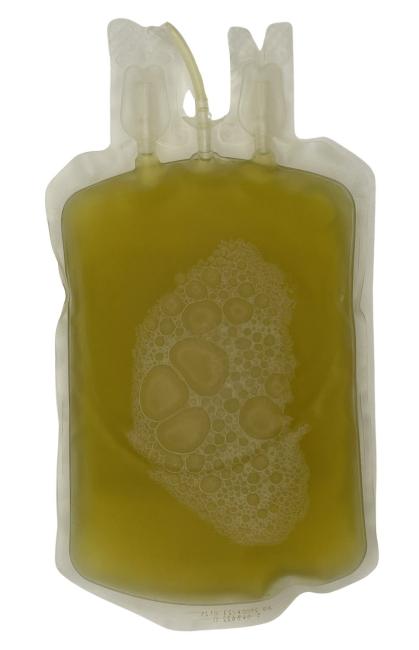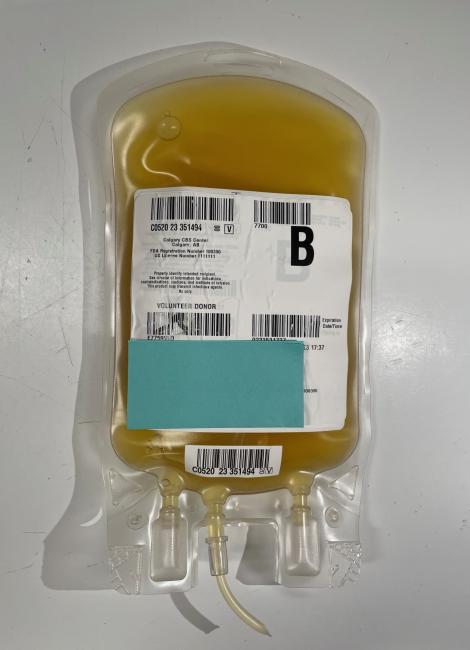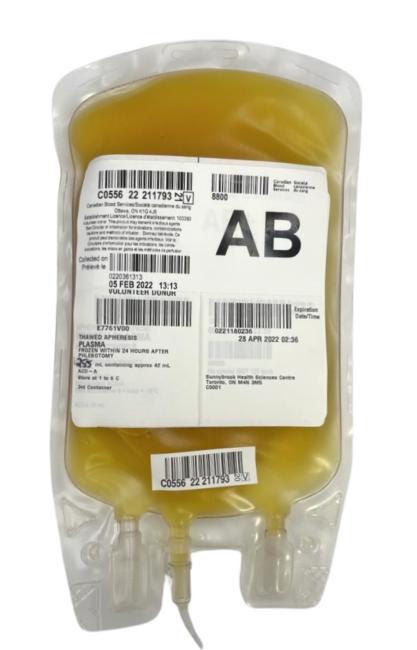Plasma: Other causes of discolouration
Colour legend
Example(s) of typical appearance
Example(s) of a change in appearance
In addition to discolouration that may be associated with contamination from RBCs or bacteria, plasma discolouration can result from variety of donor factors, including metabolic conditions, medications or large doses of vitamins taken by donors:
- Medications (acceptable for transfusion)
- Oral contraceptive pill: light green plasma
- Oral contraceptive pill: light green plasma
- Vitamins (acceptable for transfusion)
- Vitamin A (including consumption of large quantities of carrots): bright orange plasma
